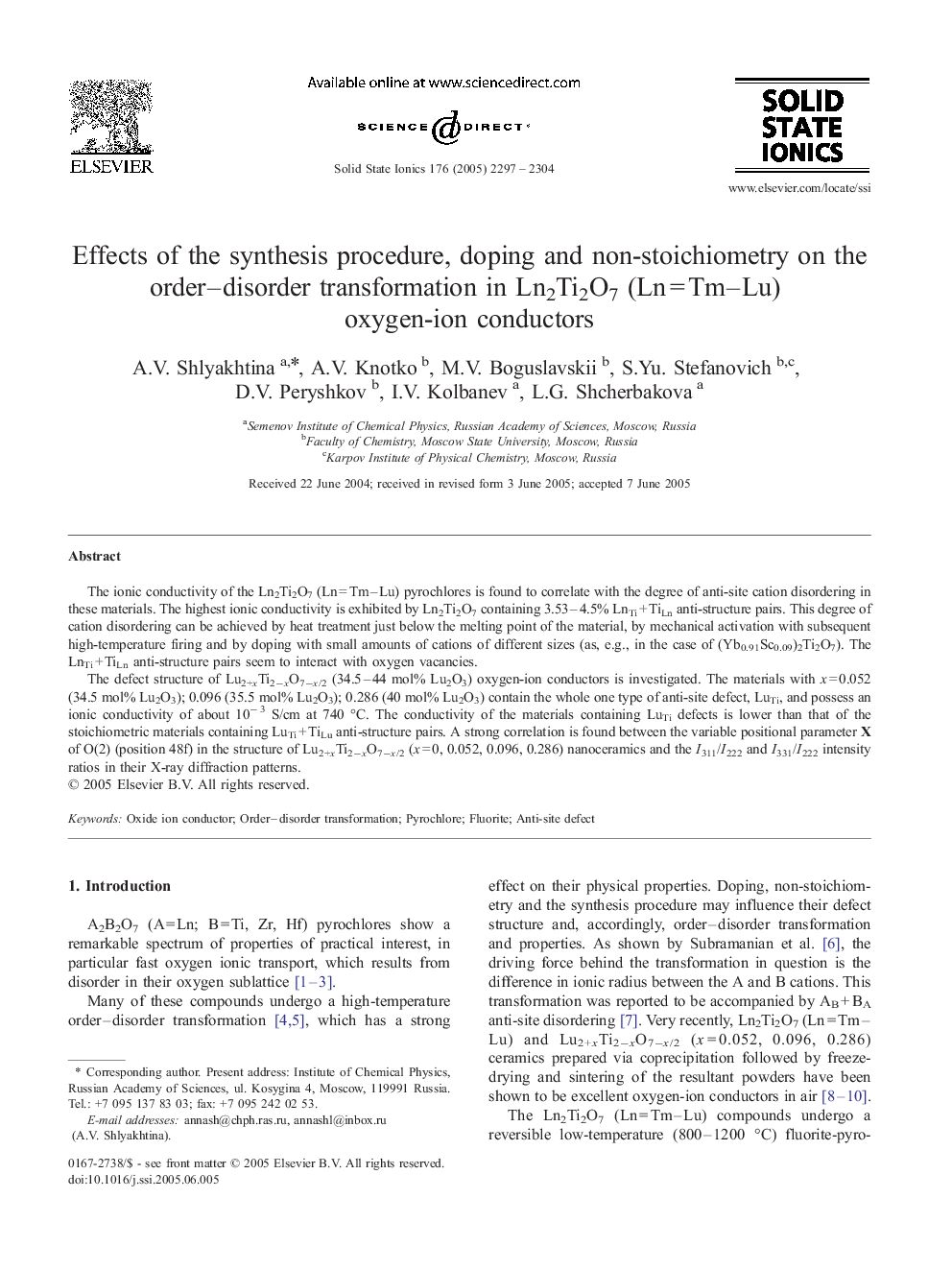| Article ID | Journal | Published Year | Pages | File Type |
|---|---|---|---|---|
| 1299012 | Solid State Ionics | 2005 | 8 Pages |
The ionic conductivity of the Ln2Ti2O7 (Ln = Tm–Lu) pyrochlores is found to correlate with the degree of anti-site cation disordering in these materials. The highest ionic conductivity is exhibited by Ln2Ti2O7 containing 3.53–4.5% LnTi + TiLn anti-structure pairs. This degree of cation disordering can be achieved by heat treatment just below the melting point of the material, by mechanical activation with subsequent high-temperature firing and by doping with small amounts of cations of different sizes (as, e.g., in the case of (Yb0.91Sc0.09)2Ti2O7). The LnTi + TiLn anti-structure pairs seem to interact with oxygen vacancies.The defect structure of Lu2+xTi2−xO7−x/2 (34.5–44 mol% Lu2O3) oxygen-ion conductors is investigated. The materials with x = 0.052 (34.5 mol% Lu2O3); 0.096 (35.5 mol% Lu2O3); 0.286 (40 mol% Lu2O3) contain the whole one type of anti-site defect, LuTi, and possess an ionic conductivity of about 10− 3 S/cm at 740 °C. The conductivity of the materials containing LuTi defects is lower than that of the stoichiometric materials containing LuTi + TiLu anti-structure pairs. A strong correlation is found between the variable positional parameter X of O(2) (position 48f) in the structure of Lu2+xTi2−xO7−x/2 (x = 0, 0.052, 0.096, 0.286) nanoceramics and the I311/I222 and I331/I222 intensity ratios in their X-ray diffraction patterns.
